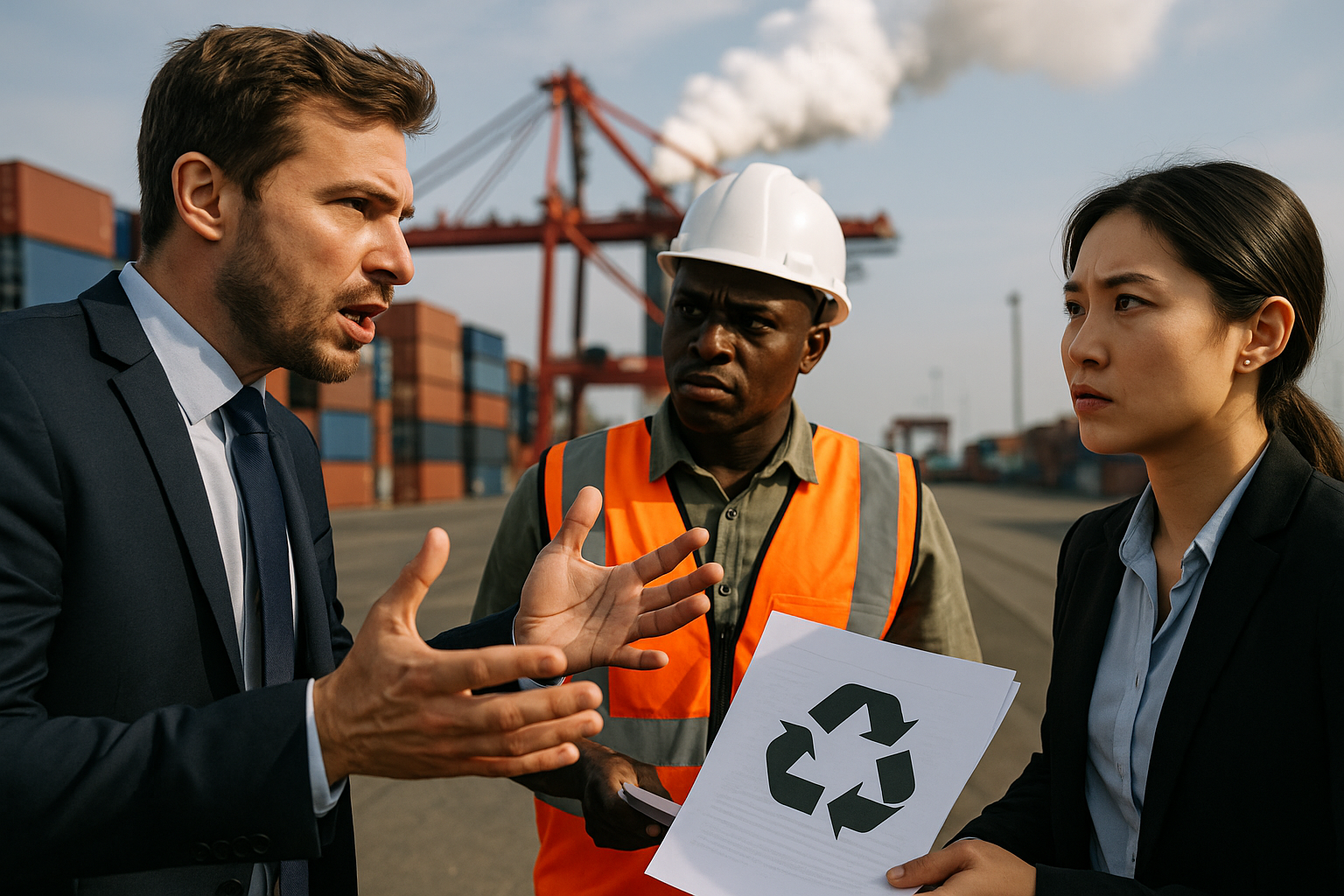CBAM to Reshape Global Trade: Developing Nations Face Risks, Some See Opportunities
The World Bank and Purdue University developed exposure indices showing that the EU’s Carbon Border Adjustment Mechanism will only modestly affect most developing economies overall, but it poses serious competitiveness risks for carbon-intensive exports like Mozambique’s aluminum, Egypt’s steel and fertilizers, and Belarus’s cement. At the same time, cleaner producers such as Ghana, Brazil, Jordan, and Morocco may gain market share in Europe under the new rules.

The World Bank, working closely with Purdue University, has unveiled a methodological note that scrutinizes the European Union’s Carbon Border Adjustment Mechanism (CBAM), a transformative policy linking climate action to international trade. The research, conducted by M. Maliszewska, C. Fischer, and E. Jung of the World Bank along with M. Chepeliev of Purdue University, lays out a series of indices to measure how exposed developing economies may be to the EU’s new rules. CBAM is the EU’s answer to the challenge of carbon leakage, the risk that industries relocate to countries with weaker climate policies. By imposing the same carbon costs on imported goods as those faced by European producers under the Emissions Trading System (ETS), the policy seeks to level the playing field. Free allowances under the ETS, once granted to soften the blow for heavy industries, are being phased out. Instead, importers must buy CBAM certificates covering the carbon content of their goods, ensuring that European consumers face uniform carbon-adjusted prices whether they buy at home or abroad.
How Exposure is Calculated
At the heart of the analysis lies the idea of “excess carbon payments”, the additional cost exporters bear compared with an average EU producer in the same sector. Exposure is shaped by two forces: relative emission intensity and dependence on EU trade. To translate this into measurable outcomes, the researchers devised four indices. The Trade Exposure Index evaluates excess costs as a share of sectoral exports; the Aggregate Trade Exposure Index tallies the costs across all CBAM sectors; the Output Exposure Index measures excess payments relative to gross sectoral output; and the Economic Exposure Index situates the burden within national GDP. Using a reference carbon price of $100 per ton of CO₂, along with trade data from the World Bank’s WITS database and emission intensity data from the GTAP-Circular Economy model, the team presents a comparative view across countries and products. The assumption is that exporters ultimately shoulder the costs, even though legally the obligation rests with EU importers.
Vulnerabilities in Key Sectors
The results reveal sharp contrasts. Mozambique’s aluminum exports are particularly at risk, since 97 percent of them go to the EU and production is far more carbon-intensive than the European average. Excess carbon payments here would equal about 6.5 percent of export value, undermining competitiveness. Egypt faces the heaviest burden overall, with iron and steel exports carrying excess payments equal to 16 percent of value, and fertilizers nearly 19 percent. Belarus’s cement industry stands out with a striking 27 percent of exports vulnerable, while India’s iron and steel sector shows exposure around 13 percent. These figures highlight where the CBAM could most disrupt trade flows and erode market positions. Yet the analysis also points to winners. Ghana in aluminum, Brazil in cement, Jordan in fertilizer, and Morocco in steel produce with lower emission intensity than the EU average. In these cases, CBAM could tilt the competitive balance in their favor, offering opportunities to capture greater market share in Europe.
Aggregate and Macroeconomic Impact
When exposures are aggregated across sectors, the picture becomes more subdued. Egypt registers the highest aggregate exposure at 16 percent of its CBAM exports, while Mozambique, Ukraine, Uzbekistan, India, and Nigeria also rank among the most affected. Yet only six countries surpass 2 percent overall exposure, indicating that for most economies the risk is limited at the trade-wide level. From a macroeconomic perspective, the effects are even smaller. Mozambique tops the list again, but the CBAM’s burden amounts to just 0.6 percent of GDP. Ukraine follows at 0.5 percent and Egypt at 0.2 percent, while nearly all other countries record less than 0.1 percent. This shows that while some sectors may face serious challenges, national economies as a whole are unlikely to be destabilized by the policy.
Beyond the Numbers
The authors caution that their indices are only a starting point. They rely on sector-wide averages from 2017 rather than firm-level data, which means cleaner exporters may appear more vulnerable than they truly are. The focus on CO₂ excludes nitrous oxide and perfluorocarbons, which could slightly raise exposure for fertilizers and aluminum. Domestic carbon pricing policies could also offset some of the costs, since CBAM rules allow deductions for carbon prices already paid at home. Compliance and reporting costs, shifts in consumer prices, and the degree of pass-through in EU markets are not captured either. These factors could alter the real impact considerably. Still, the framework is valuable for highlighting where risks concentrate and where opportunities may emerge. For heavily exposed countries such as Mozambique, Egypt, and Belarus, CBAM is a wake-up call to invest in cleaner production and perhaps adopt domestic carbon pricing. For countries already producing more cleanly than Europe, CBAM may provide a competitive edge.
The study underscores that CBAM is both risk and opportunity. It punishes exporters with carbon-heavy industries but rewards those with cleaner production, shifting the basis of competitiveness from cost alone to cost plus carbon efficiency. For developing economies, aligning with the tightening carbon rules of global trade is no longer optional. The message is clear: in the emerging world order, carbon performance is as central to competitiveness as price or quality.
- FIRST PUBLISHED IN:
- Devdiscourse










